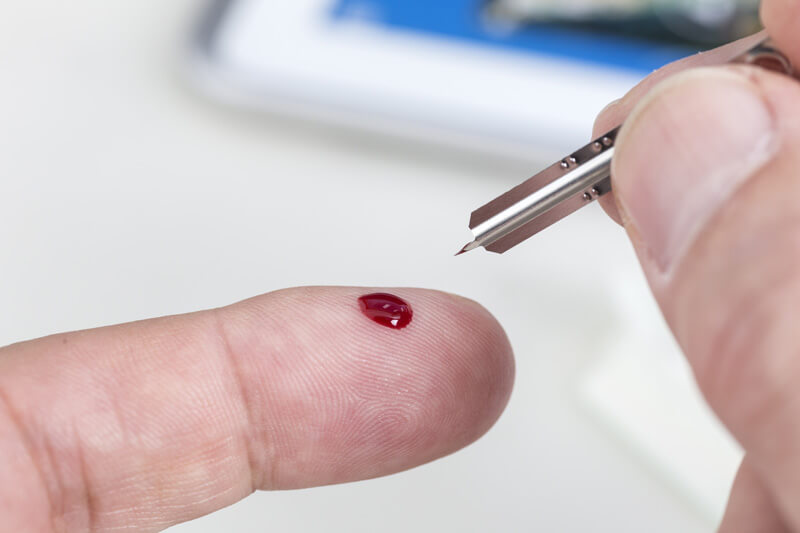Biomarker

Biomarkers in oncology
Clinical research in oncology has identified a number of biomarkers that are valuable for diagnosis, prognosis assessment and individualised therapies. Biomarkers are molecules found in the blood or other body fluids that provide information about altered carcinogenic DNA or RNA.
Some of these markers have been in clinical use for years, others are currently being tested in scientific programmes at specialised cancer centres. Biomarkers can be used to determine the recurrence of cancer or the dose-response relationship of a therapy.
The direct FMB method will reliably identify biomarkers
The ICHORtec system consists of the ICHORscope device and a specific test tube to hold the patient sample. Depending on the disease under investigation by the clinic, the test tube is equipped with a specific probe. In the case of biomarker detection, the probe reacts specifically with the target molecule, e.g. a nucleic acid sequence (RNA) or a peptide sequence (protein) In the case of a protein structure to be tested, sequence-specific hybridisation occurs and an energy signature is released, which is recorded and interpreted by means of “micro-fluorescence spectroscopy”. In future, this molecular correlation will be referred to as “fluorometry of molecular binding -FMB”. This will open up further fields of application for ICHORtec, such as antibody detection, toxins or biomarkers.
The method is suitable for screening and personalised therapy
Biomarkers can be used to screen healthy individuals for possible disease. General results have shown dynamic changes in differentially expressed circulating RNAs specific to the histology and stage of lung carcinoma. The largest number of differentially expressed RNAs has been identified approximately 7 years before diagnosis in early stage lung cancer. The data to date show the potential for lung cancer screening and suggest improved treatment and prognosis.
Diagnostic biomarkers can be used for differential diagnosis, e.g. whether a recurrence of breast cancer is plausible (CA 12-3). High CA 15-3 values alone do not provide enough evidence. They are only significant if the value of a “CA 15-3 tumour” increases or worsens during therapy. There is a correlation between the level of CEA and/or CA 15-3 and the progression of the tumour related illness. Thus, if there is a moderate increase, it can be detected early, and physicians can discuss personalised therapy.
The object of ICHORtec research and development is to use the FMB® method to prevent measurement artefacts in the detection of biomarkers and to increase sensitivity. Through direct access to the molecular structure, a significant increase in sensitivity and specificity can be expected.